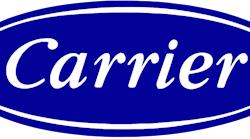Johnny Morris, director of engineering and maintenance for Carilion Roanoke Memorial Hospital in Roanoke, Va., said his organization is not afraid of new technology.
“We want to be at the leading edge of technology,” Morris said. “That applies to the medical technology, and it also applies to our comfort systems.”
For that reason, the hospital systematically has upgraded its chiller plant, chilled-water-delivery system, and building-control system and has participated in field tests of new chiller technology. The Carilion facility is expanding, and Morris' department has been charged with meeting building-comfort needs while watching operating costs.
FACILITIES STAFF FACED CHALLENGES
The Carilion Health System includes 10 hospitals serving western Virginia. Carilion is the largest health-care provider in most of the communities it serves and has achieved a reputation for innovation in patient care and medical procedures. The facilities staff at Carilion Roanoke Memorial Hospital faces all of the challenges confronting modern hospitals: rising energy costs, changing space allocations, pressure to hold down operating expenses, and increasing building-comfort requirements. In addition, this 1-million-sq-ft hospital is growing rapidly.
The 15-story main building received a major addition, the South Pavilion, eight years ago, which was followed by the Mountain Pavilion, an additional 146,000 sq ft. All of these areas are served by a central chilled-water plant, located in a hospital power-plant facility. This is where Morris' team has been focusing its efforts for improvement.
REDUCING ENERGY EXPENSES
“Over 80 percent of our facility operating expense is utilities, and a major part of that is the comfort system, so we look at the chiller plant very closely,” Morris said, pointing out that Carilion has a close relationship with Virginia Trane, located in Roanoke.
In recent years, Morris' group studied the need for additional chiller capacity to serve the growing facility.
“We determined that there was a potential for improving the functionality and efficiency of the existing chillers by putting them on a common chilled-water header,” Morris said.
In 2001, the hospital launched a major chiller-plant-improvement project. Working with Virginia Trane, Carilion developed a plan to repipe the chillers onto a common header and add two new chillers. According to Virginia Trane's Bill Upthegrove, this step allowed Morris' staff to select chiller operating priorities based on chiller characteristics, not piping limitations.
“Further,” Upthegrove said, “they get added security by making every chiller available.”
Expanding the functionality of the Tracer Summit building-control system also was important. Carilion chose Roanoke firm GJ Hopkins, a Trane Strategic Partner, as mechanical contractor for the piping project. Because cooling is needed for the hospital year-round, the piping work was arranged to keep at least one chiller in service at all times.
CHILLER PLANT REVISED
One older chiller was retired, leaving three chillers: a 450-ton Carrier chiller; a 900-ton Trane CenTraVac unit, model CVHE; and a 1,200-ton Trane CenTraVac chiller, model CVHF. Two new chillers were ordered and installed. One of the new chillers was a standard high-efficiency Trane CenTraVac unit, model CVHF, rated at 600 tons. The second chiller was a similarly sized Trane CenTraVac unit, model CVHF. However, it was a field demonstration of Trane's new S-Series design, which uses an oil-free compressor. This demonstration of the new technology was ideal because of its side-by-side use with a comparable conventional design. The chiller has successfully demonstrated the new technology since its installation in 2001, and Morris has been enthusiastic about its efficiency.
The common chilled-water-header design allows the optimum mix of chillers to be used for varying cooling-load conditions. This plant-optimization capability is supported by the Trane Tracer Summit system. Additionally, many of the pumps and fans were fitted with variable-speed drives. This modification allows the Summit system to optimize operation of these units, providing additional energy savings.
IMPROVED CHILLED-WATER SERVICE
Chilled water from the central plant supplies air handlers serving variable-air-volume (VAV) terminals throughout the hospital, as well as fan-coil units in many of the patient rooms. The improvements in the central plant allow the terminal units to receive lower-temperature chilled water. This provides more cooling capacity and improved dehumidification. Many of the patient rooms also had been fitted with radiant-cooling ceiling panels.
“These had always been a problem because of slow cooling response and condensation problems,” Morris said.
Most of the panels were replaced with VAV boxes or fan coils. The newest hospital addition was equipped with Trane Climate Changer air handlers and VariTrane VAV boxes with hot-water reheat. The hospital has gas-fired boilers providing steam and hot water for heating, reheat, and domestic-hot-water applications.
PARTNERSHIP IMPORTANT
Morris said the partnership with Trane was important to the hospital's success in holding down operating expenses and keeping equipment running. He also noted that hospital facilities are constantly evolving.
“We're modifying our system all the time, and we need Trane's expertise in these systems,” Morris said.
In today's health-care market, change is a daily event. Carilion Roanoke Memorial Hospital now is ready to meet those changing requirements.








